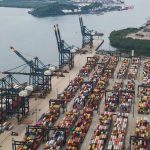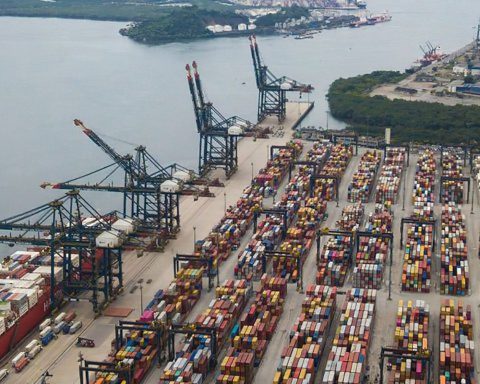The world economy will grow only 2.8% this year due to the uncertainty caused by the tariffs of US President Donald Trump and reprisals from some countries, the International Monetary Fund predicted on Tuesday. Since February the United States has announced several tariffs against commercial and rival partners, some of which have reacted with countermeasures.
At the beginning the markets seemed to take it easy until the so -called “reciprocal” tariffs of April 2 made their bags tremble. Something recovered when Trump announced a partial pause and several exemptions. “The rapid escalation of commercial tensions and extremely high levels of political uncertainty” will have “an important impact on global economic activity,” It is read in the IMF report. He points out that this time is a “reference forecast.”
It may interest you: With 1.8%, the economic activity of February lost strength, according to the Dane
The equation is complex.
The IMF claims to have taken into consideration the evolution of tariffs until April 4, but not retaliation measures between Beijing and Washington. “We entered a period in which the world economic system we have met for 80 years is being reset,” Pierre-Livier Gourinchas, IMF chief economist, told journalists.
As a sample of the great impact of customs rates the background highlights a data: The trade of goods and services will grow only 1.7% this year, instead of 3.2% planned three months ago. With its 2.8% growth (0.5 percentage points less than expected) the world economy should be fought from “the recession”, predict nonetheless Gourinchas.
IMP
EFE
But the blow hurts Mexico. Its economy will contract 0.3% this year (-1.7 pp) due to the impact of US tariffs, a slowdown in activity, uncertainty and hardening of financing conditions, explains the IMF.
The second largest economy in Latin America drags the continent down. For Latin America and the Caribbean, the fund, based in Washington, predicts that economic growth is moderated to 2.0% in 2025 (-0.5 pp), before recurring 2.4% in 2026 (-0.3 pp over its previous forecast). And the Risk of recession plans both the world economy and on the United States.
More information: Uncertainty, the effect of the new prioritization of the subsidies of my house already
In general terms, “tariffs will act as a supply shock in the United States, with a productivity and production drop and a price increase, and as a demand shock in other places, carrying production and pulling the downward prices,” he said. – Varied impact- Not only remains magulmed Mexico but the economies of the other two countries of North America, with a strong downward review compared to the three months before: United States +1.8% this year (- 0.9 pp) and Canada +1.4% (-0.6pp).
China, Main Diana of Trump tariffs (+145% on their products in addition of those existing before the return of the Republican to power in January) will also accuse the blow. It could experience its weakest growth since 1990, with only 4% GDP expansion.

World GDP
Istock
It is expected that the Eurozone does better but “tariffs will weaken a modest economic recovery (…) Despite an increase in public spending” in some countries like Germany, Gourinchas explained. In his opinion, more expense “in infrastructure could help accelerate growth.”
The only exception is Spain, which has experienced the greatest growth of the euro zone in the last two years. The IMF rises the forecasts for the country to 2.5% expansion, the highest index among advanced economies. Another consequence of tariffs will be a probable increase in inflation in advanced economies up to 2.5% this year. In the United States it could be maintained around 3% this year.
Other news: Why was the national emergency for yellow fever declared?
Colombia Chapter
Although the details of what is expected and the alerts to be reviewed in the coming months were not yet expanded, the International Monetary Fund updated its growth projections for Colombia, which also adjusted downwardly and left the country on a scenario similar to that of last year.
This starting from the fact that the October version of the World Economic Outlook spoke of a growth of the Gross Domestic Product (GDP) of 2.5% and now it is believed that It will be only 2.4 %. Similarly, in 2026 the variation would no longer be 2.9 % but 2.6 %.
“The rapid escalation of commercial tensions has generated extremely high levels of ambiguity in policies, which makes it more difficult than usual to establish a central world growth,” the document says.
With AFP information.

















